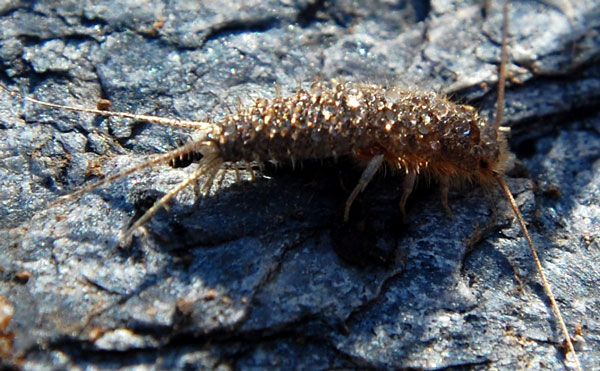Firebrat
Thermobia domestica

This adult firebrat was found clinging to the underside of a rock on a talus slope in the Phoenix Mountains Preserve, Maricopa Co., Arizona. 26 Dec 2008. Notice the drops of water on the surface of this insect. Rocks exposed to the desert night sky become colder than the soil beneath and therefore water condenses on the undersurface facing the soil. In this way the insect is protected both from excessive drying and from freezing (water releases latent heat as it condenses).
Lepismatidae -- Silverfish Family
Silverfish, order Thysanura, is an ancient lineage of arthropods and by some authorities are not clearly insects but rather belong to an ancestral group. Unlike most insects, they exhibit no metamorphosis as they grow from egg hatchling to adult, i.e. they are essentially identical except for size. They are generally detritivores feeding on leaf molds, dead insects and plant material. They are frequent in and on dwellings in the Sonoran Desert. They do not sting or bite.
Prominent characteristics of this insect order are three, long filaments at the posterior and two long antennae at anterior. Firebrats can live under very dry conditions including within homes in the desert. They can become pests feeding on book bindings and other household items. Entomologists, for example, find that firebrats can decimate dry insect specimens that are not protected.